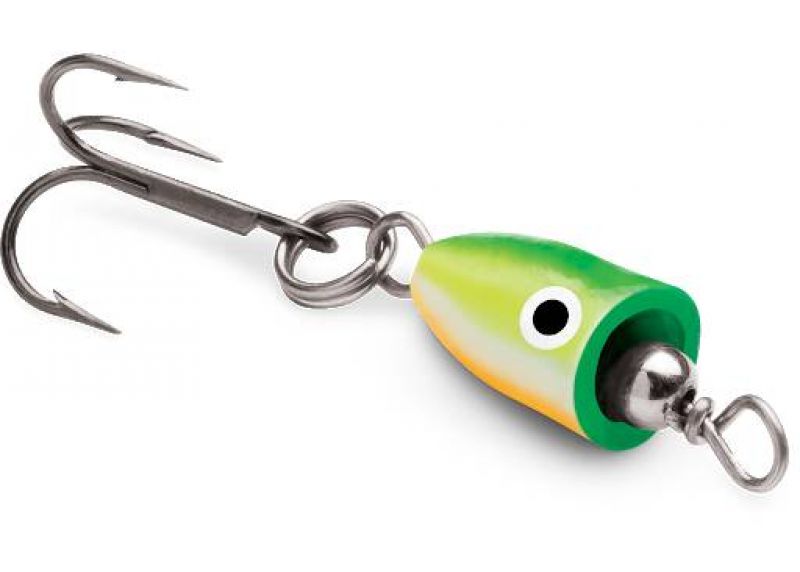John Curran | Jan 27, 2021
Humanity has had a very complex relationship with lead throughout history. Since the Romans ground it up and used it in their makeup, we’ve been poisoning ourselves and our environment with lead despite healthier alternatives being available.
While it has largely gone out of fashion – previous uses like municipal water pipes seem almost laughable nowadays after the revelations in Flint, Michigan – most sport anglers and hunters continue to employ lead-based tackle and ammunition at an almost alarming rate.
Frequently ending up in lakes, either on the bottom or in fish that break an angler’s line, that lead
in sufficient quantities has adverse effects on the nervous and reproductive systems of many animals, especially fish eaters like loons and eagles.
Given the common loon’s vast natural range, it is extremely hard to get an accurate count on the total number of deaths caused by lead poisoning annually. Research around the U.S. suggests that lead fishing tackle is responsible for 12% to 50% of adult loon deaths.
In the case of larger birds of prey, the Raptor Center at the University of Minnesota has monitored injured bald eagles for lead since 1980. It reports lead poisoning has been the cause of admission of 315 out of a total of 1,398 eagles, or 23%.
Just as was the case for the Romans, such poisoning is completely avoidable because non-toxic alternatives are readily available. Fortunately, the outdoor community is starting to wake up to these alternatives and concerned enthusiasts are turning to gear made from non-poisonous materials such as tin, bismuth, steel, tungsten and even foam.
The National Fishing and Hunting Collaborative, a coalition of outdoor groups which includes the Ontario Federation of Anglers and Hunters, has even made one of its priorities to encourage the transition away from lead. The group has committed to working with and encouraging the manufacturing sector across the outdoor industry to develop and market non-lead alternatives for fishing tackle and ammunition capable of competing with traditional lead-based products in price, availability, and real-world effectiveness.
When it comes to ice fishing season, although these alternatives remain more expensive than traditional lead offerings, they are becoming easier to find – and new designs even out fish their toxic counterparts.
Tungsten jigs in particular are emerging as a wildly popular option during the hardwater season.
At roughly twice the weight of lead, tungsten is allowing manufacturers to produce micro jigs twice as heavy as lead versions. Depth, sensitivity and lure control are all maximized – all are key factors when ice fishing. Tooth Shield Tackle’s UV Glow Tungsten Ice Fishing Jigs and Rapala’s Tungsten Tubby Jig are typical designs and, like most tungsten jigs, come in a range of eye-popping colours.
There are just a couple of things you’ll want to do differently when making the switch to tungsten jigs. Because tungsten is so much heavier, many ice anglers fish these lures too fast and erratically. Experiment with different, more subtle movements just under the surface in your hole. See how the bait moves when you merely wiggle it in place. When presenting a bait in winter to a finicky fish, slowing down is frequently the key to success.
When rigging up with soft plastics, run the hook just under the back of your offering rather than through the centre. Because the gap on these jigs is so small, this simple step can increase your hookups and double the number of fish you catch.
If traditional jigs aren’t your game, there are a myriad of lure designs that catch fish in winter without using lead.
VMC says its Tungsten Chandelier Jig offers anglers heavy-duty tungsten and an inversed conical head design to deliver superior sonar return and depth control.
Since its introduction in 2002, Salmo’s Chubby Darter has been considered by many experts to be the most prolific vertical wobbler ever created. Available in natural, fluorescent, and metallic colour patterns, the lure is again lead-free and constructed from Salmo’s patented High Density Space-Aged Foam.
No matter which lure catches your attention, all are proven options for targeting multiple species in winter, including walleye, lake trout, pike, crappie, perch, and other panfish.
More Stories
- Harrowsmith Public School and the Magic of Theatre
- You’re a Good Man Charlie Brown – a school wide effort at SHS
- Leadership From Within
- New Bulk Water Station in Sydenham
- Frontenac County Council looks at Healthcare Recruitment
- Good Turn Out Maple Fest Despite Rain
- Future looking brighter for Denbigh Fire Department says Chief
- Local Favourites featured at 2nd Annual SF Music Festival
- Perth Festival of the Maples, Saturday, April 27
- South Frontenac Council

